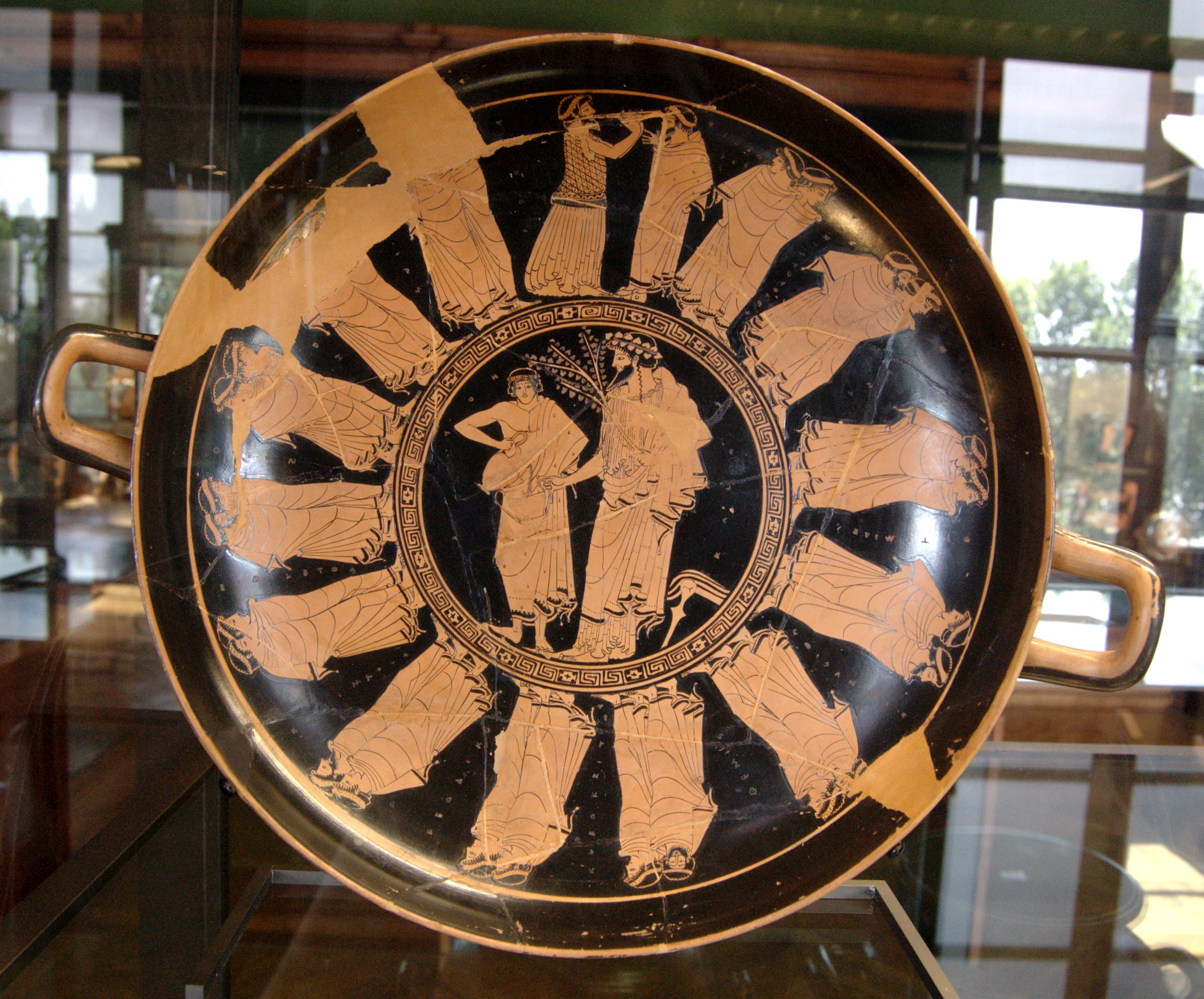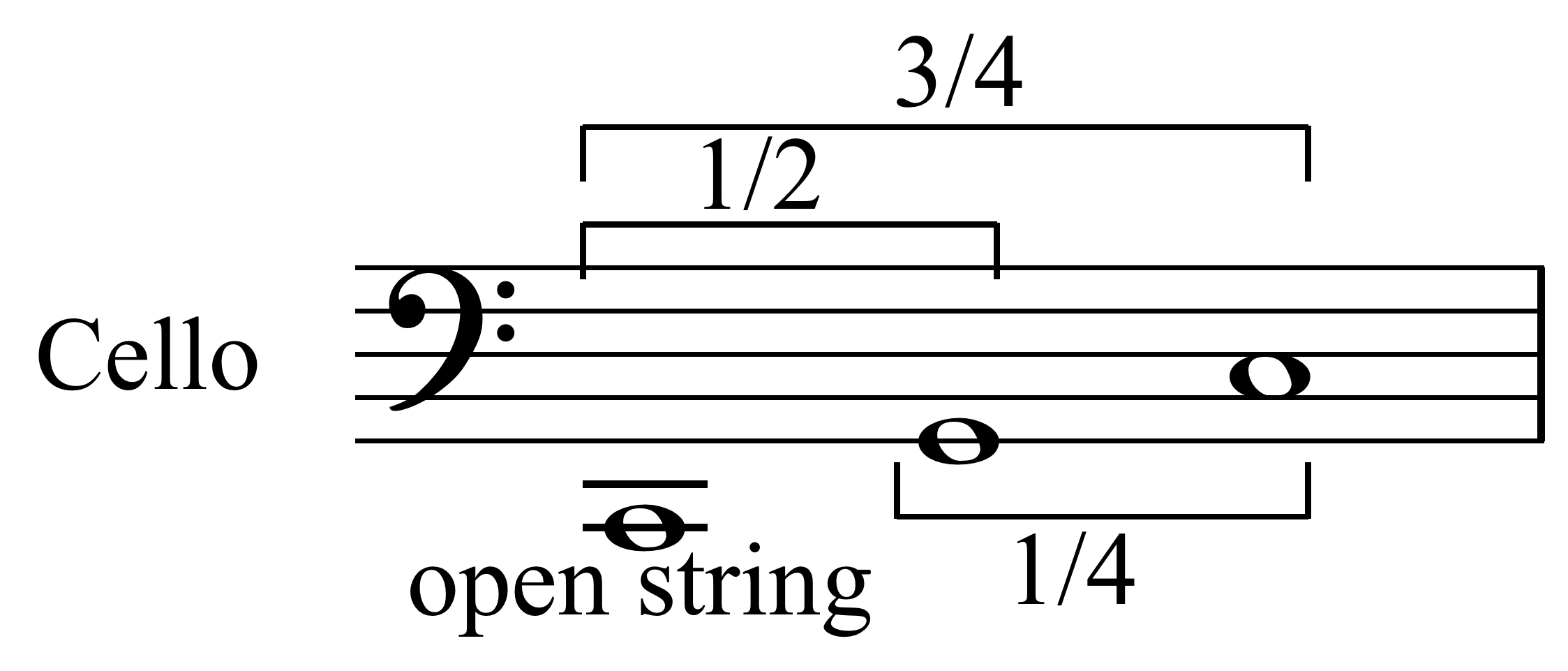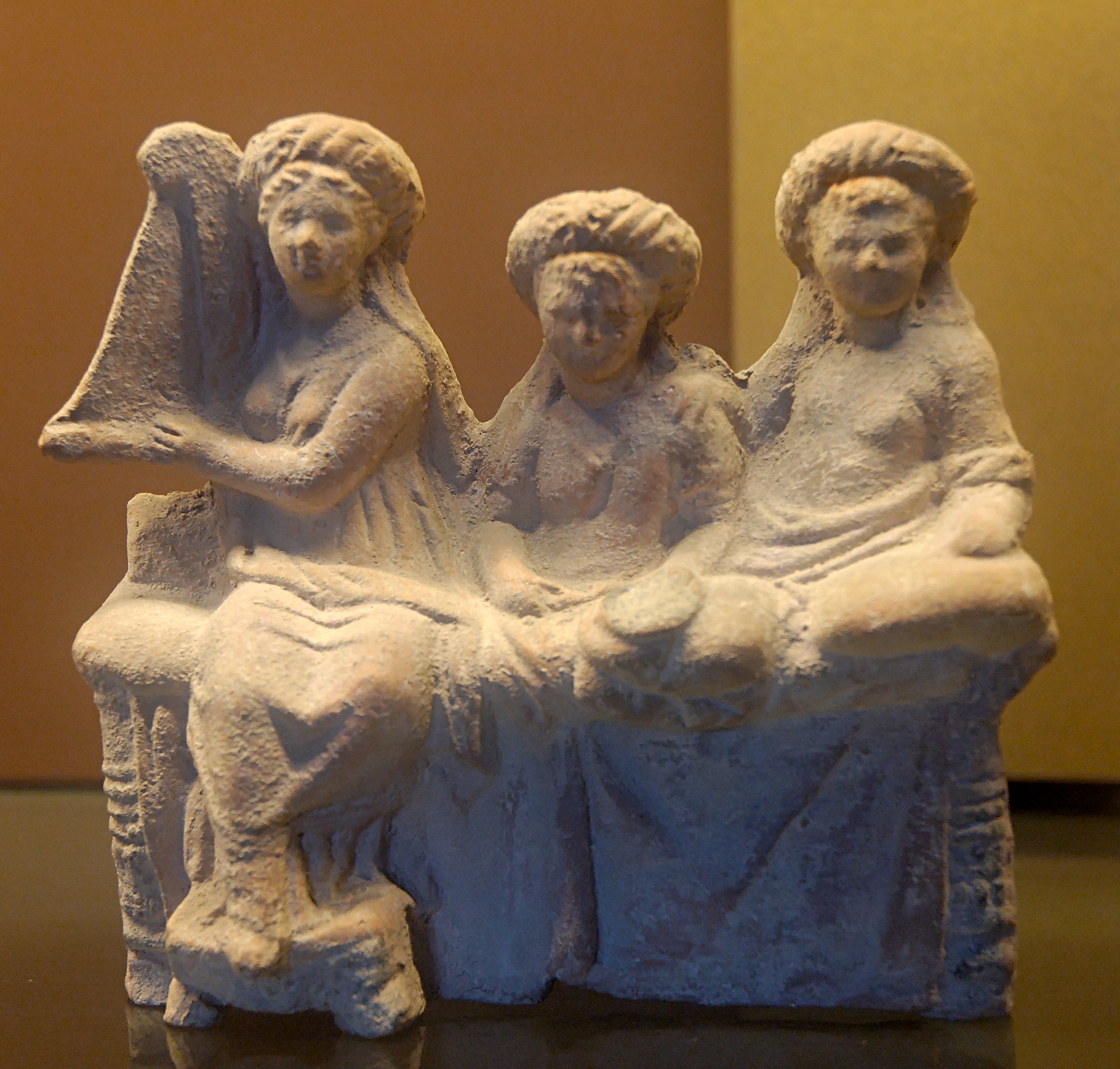|
Psaltry
:''See Rotte (psaltery) for medieval harp psaltery & Ancient Greek harps for earlier psalterion'' A psaltery () (or sawtry, an archaic form) is a fretboard-less box zither (a simple chordophone) and is considered the archetype of the zither and dulcimer. Plucked keyboard instruments such as the harpsichord were also inspired by it. Its resonance box is usually trapezoidal, rectangular or in the form of a "pig's head" and often richly decorated. Etymology The psaltery of Ancient Greece ('' epigonion'') was a harp-like stringed instrument. The word ''psaltery'' derives from the Ancient Greek ψαλτήριον (''psaltḗrion''), "stringed instrument, psaltery, harp" and that from the verb ψάλλω (''psállō''), "to touch sharply, to pluck, pull, twitch" and in the case of the strings of musical instruments, "to play a stringed instrument with the fingers, and not with the plectrum." The psaltery was originally made from wood, and relied on natural acoustics for sound produ ... [...More Info...] [...Related Items...] OR: [Wikipedia] [Google] [Baidu] |
Chordophone
In musical instrument classification, string instruments, or chordophones, are musical instruments that produce sound from vibrating strings when a performer strums, plucks, strikes or sounds the strings in varying manners. Musicians play some string instruments, like Guitar, guitars, by plucking the String (music), strings with their fingers or a plectrum, plectrum (pick), and others by hitting the strings with a light wooden hammer or by rubbing the strings with a bow (music), bow, like Violin, violins. In some keyboard (music), keyboard instruments, such as the harpsichord, the musician presses a key that plucks the string. Other musical instruments generate sound by striking the string. With bowed instruments, the player pulls a rosined horsehair bow across the strings, causing them to vibrate. With a hurdy-gurdy, the musician cranks a wheel whose rosined edge touches the strings. Bowed instruments include the string section instruments of the orchestra in Western classic ... [...More Info...] [...Related Items...] OR: [Wikipedia] [Google] [Baidu] |
Se (instrument)
The ''se'' () or ''guse'' () is an ancient plucked zither of Chinese origin. It varied in size and construction, but generally had 25–50 strings with moveable bridges and a range of up to five octaves. It was one of the most important stringed instruments in China, along with the '' guqin''. The ''se'' gradually faded out of use, having evolved into the similar '' zheng''. Modern versions of the ''se'' often resemble the ''zheng'', and attempts have been made to revive the instrument. History According to legend, the ''se'' was created by the god Fuxi. It is said that the word for music, ''yue'' ( 樂), is composed of the characters ''si'' for silk ( 絲) and ''mu'' for wood ( 木), and that it is a representation of the instrument. Historical accounts of the ''se'' begin in the Western Zhou period (1045–771 BC), and was a popular instrument during the Spring and Autumn period (771–476 BC). Together with the '' qin'', it is mentioned in the '' Guan Ju'', the famous first ... [...More Info...] [...Related Items...] OR: [Wikipedia] [Google] [Baidu] |
Apulia
Apulia ( ), also known by its Italian language, Italian name Puglia (), is a Regions of Italy, region of Italy, located in the Southern Italy, southern peninsular section of the country, bordering the Adriatic Sea to the east, the Strait of Otranto and Ionian Sea to the southeast and the Gulf of Taranto to the south. The region comprises , and has 3,874,166 inhabitants as of 2025. It is bordered by the other Italian regions of Molise to the north, Campania to the west, and Basilicata to the southwest. The regional capital is Bari. In ancient times, more precisely at the beginning of the first millennium BC, the region of Apulia was inhabited by the Iapygians, while during the 8th century BC its coastal areas were populated by Magna Graecia, ancient Greeks. Later, the region was conquered by the ancient Romans. It was then conquered by the Byzantine Empire, Byzantines, followed by the Normans, the Kingdom of Aragon, Aragonese and the Spanish Empire, Spanish. Subsequently, it bec ... [...More Info...] [...Related Items...] OR: [Wikipedia] [Google] [Baidu] |
Pelike
A pelike () is a one-piece ceramic container similar to an amphora An amphora (; ; English ) is a type of container with a pointed bottom and characteristic shape and size which fit tightly (and therefore safely) against each other in storage rooms and packages, tied together with rope and delivered by land .... It has two open handles that are vertical on their lateral aspects and even at the side with the edge of the belly, a narrow neck, a flanged mouth, and a sagging, almost spherical belly. Unlike the often-pointed bottom of many amphorae, the pelike's bottom is always flanged so it will stand on its own. Pelikes are often intricately painted, usually depicting a scene involving people. The shape first appeared at the end of the 6th century BCE and continued to the 4th century BCE. The pelike's function is not known for certain, but many classical experts speculate, due to its shape, the locations they have been found and the subject matter they are decorated with ... [...More Info...] [...Related Items...] OR: [Wikipedia] [Google] [Baidu] |
Red-figure Pottery
Red-figure pottery () is a style of Pottery of ancient Greece, ancient Greek pottery in which the background of the pottery is painted black while the figures and details are left in the natural red or orange color of the clay. It developed in Athens around 520 BC and remained in use until the late 3rd century AD. It replaced the previously dominant style of black-figure pottery within a few decades. Its modern name is based on the figural depictions in red color on a black background, in contrast to the preceding black-figure style with black figures on a red background. The most important areas of production, apart from Attica, were in Magna Graecia, Southern Italy. The style was also adopted in other parts of Greece. Etruria became an important center of production outside the Ancient Greece, Greek World. Attic red-figure vases were exported throughout Greece and beyond. For a long time, they dominated the market for fine ceramics. Few centers of pottery production could compe ... [...More Info...] [...Related Items...] OR: [Wikipedia] [Google] [Baidu] |
Ancient Greek Harp
The psalterion (Greek ψαλτήριον) is a stringed, plucked instrument, an ancient Greek harp. Psalterion was a general word for harps in the latter part of the 4th century B.C. It meant "plucking instrument". In addition to their most important stringed instrument, the seven-stringed lyre, the Greeks also used multi-stringed, finger-plucked instruments: harps. The general name for these was the psalterion. Ancient vase paintings often depict – almost always in the hands of women – various types of harps. Names found in written sources include pektis, trigonos, magadis, sambuca, epigonion. These names could denote instruments of this type. Unlike the lyres, the harp was rarely used in Greece. It was seen as an "outside instrument" from the Orient. It also touched on Greek social mores, being used mainly by women, both upper-class women as well as hetaerae entertainers. There was a group of women known as ''psaltriai'', female pluckers of the instrument who could be hi ... [...More Info...] [...Related Items...] OR: [Wikipedia] [Google] [Baidu] |
Rotte (psaltery)
:''See Rotte (lyre) for the medieval lyre, or Rote for the fiddle'' During the 11th to 15th century A.D., rotte (German) or rota (Spanish) referred to a triangular psaltery illustrated in the hands of King David and played by jongleurs (popular musicians who might play the music of troubadours) and cytharistas (Latin word for a musician who plays string instruments). Besides being played in popular music, the church may have used them as well; a letter from Cuthbert, Abbot of Jarrow, England survives, in which he asks an archbishop to send him a ''cytharista'' to play the ''rotta''. The instruments least 10 strings on each side and were held like a harp in front of the musician. Rottes were also described as having 17 stings and 22 strings on each side. The playing position was different from other psalteries, as the Rotte might be held like a harp, leaned sideways (flat against the musician's chest), or rested on the lap. Two styles of rotte have been inferred from images: the f ... [...More Info...] [...Related Items...] OR: [Wikipedia] [Google] [Baidu] |
Harpsichord
A harpsichord is a musical instrument played by means of a musical keyboard, keyboard. Depressing a key raises its back end within the instrument, which in turn raises a mechanism with a small plectrum made from quill or plastic that plucks one or more strings. The strings are under tension on a Sound board (music), soundboard, which is mounted in a wooden case; the soundboard amplifies the vibrations from the strings so that the listeners can hear it. Like a pipe organ, a harpsichord may have more than one keyboard Manual (music), manual and even a #Pedal harpsichord, pedal board. Harpsichords may also have Organ stop, stop levers which add or remove additional octaves. Some harpsichords may have a buff stop, which brings a strip of buff leather or other material in contact with the strings, muting their sound to simulate the sound of a plucked lute. The term denotes the whole family of similar plucked-keyboard instruments, including the smaller virginals, virginals#Muselars, m ... [...More Info...] [...Related Items...] OR: [Wikipedia] [Google] [Baidu] |
Dulcimer
The term dulcimer refers to two families of musical string instruments. Hammered dulcimers The word ''dulcimer'' originally referred to a trapezoidal zither similar to a psaltery whose many strings are struck by handheld "hammers". Variants of this instrument are found in many cultures, including: * Hammered dulcimer (England, Scotland, United States) * Hackbrett (southern Germany, Austria, Switzerland) * Tsymbaly (Ukraine), tsimbl (Ashkenazi Jewish), țambal (Romania) and cimbalom (Hungary) may refer to either a relatively small folk instrument or a larger classical instrument. The santouri (Greece) (called "santur" in the Ottoman Empire) is almost identical to the Jewish and Romanian folk instruments. * Santur (Iran and Iraq) * Santoor (northern India and Pakistan) is constructed and tuned differently from the santur of Iran and Iraq * Khim (Cambodia, Laos, Thailand) * Yangqin (China), Đàn tam thập lục (Vietnam), yanggeum (Korea) Appalachian dulcimer and deriv ... [...More Info...] [...Related Items...] OR: [Wikipedia] [Google] [Baidu] |
Chordophone
In musical instrument classification, string instruments, or chordophones, are musical instruments that produce sound from vibrating strings when a performer strums, plucks, strikes or sounds the strings in varying manners. Musicians play some string instruments, like Guitar, guitars, by plucking the String (music), strings with their fingers or a plectrum, plectrum (pick), and others by hitting the strings with a light wooden hammer or by rubbing the strings with a bow (music), bow, like Violin, violins. In some keyboard (music), keyboard instruments, such as the harpsichord, the musician presses a key that plucks the string. Other musical instruments generate sound by striking the string. With bowed instruments, the player pulls a rosined horsehair bow across the strings, causing them to vibrate. With a hurdy-gurdy, the musician cranks a wheel whose rosined edge touches the strings. Bowed instruments include the string section instruments of the orchestra in Western classic ... [...More Info...] [...Related Items...] OR: [Wikipedia] [Google] [Baidu] |
Zither
Zither (; , from the Greek ''cithara'') is a class of stringed instruments. The modern instrument has many strings stretched across a thin, flat body. Zithers are typically played by strumming or plucking the strings with the fingers or a plectrum. In the Hornbostel–Sachs classification system, the term refers to a larger family of similarly shaped instruments that also includes the hammered dulcimer family and piano and a few rare bowed instruments like the bowed psaltery, bowed dulcimer, and streichmelodion. Like an acoustic guitar or lute, a zither's body serves as a resonating chamber ( sound box), but, unlike guitars and lutes, a zither lacks a distinctly separate neck assembly. The number of strings varies, from one to more than fifty. In modern usage the term "zither" usually refers to three specific instruments: the concert zither (), its variant the Alpine zither (each of which uses a fretted fingerboard), and the chord zither (more recently described as a ... [...More Info...] [...Related Items...] OR: [Wikipedia] [Google] [Baidu] |
Ancient Greek Harps
The psalterion (Greek ψαλτήριον) is a stringed, plucked instrument, an ancient Greek harp. Psalterion was a general word for harps in the latter part of the 4th century B.C. It meant "plucking instrument". In addition to their most important stringed instrument, the seven-stringed lyre, the Greeks also used multi-stringed, finger-plucked instruments: harps. The general name for these was the psalterion. Ancient vase paintings often depict – almost always in the hands of women – various types of harps. Names found in written sources include pektis, trigonos, magadis, sambuca, epigonion. These names could denote instruments of this type. Unlike the lyres, the harp was rarely used in Greece. It was seen as an "outside instrument" from the Orient. It also touched on Greek social mores, being used mainly by women, both upper-class women as well as hetaerae entertainers. There was a group of women known as ''psaltriai'', female pluckers of the instrument who could be ... [...More Info...] [...Related Items...] OR: [Wikipedia] [Google] [Baidu] |







